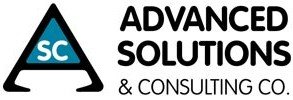Intercompany transactions are a vital yet complicated part of accounting for businesses that have at least one subsidiary. It is a time-consuming process that becomes more challenging and resource-intensive as companies expand nationally and internationally. Having Enterprise Resource Planning (ERP) software that supports and automates intercompany accounting, such as Acumatica’s Advanced Intercompany Accounting (AIS) solution, can drastically reduce the time and resources required to track and reconcile intercompany transactions.
Acumatica’s native intercompany accounting automates financial reporting, inventory transfers, vendor, payments, cash management, and inter-company transfers across an unlimited number of related subsidiaries and companies within the organization. The solution also allows for sharing of charts of accounts (COAs), calendars, currencies, and non-financial data across related companies for one view across all of these entities—while also allowing for the restriction of access as needed for customers, branches, or companies.
Multi inter-tenants and companies accounting and operations
AIS extends the native intercompany accounting functions to support multiple base currencies, COAs and calendars. It supports multi-tenant/company operations and all combinations of single operating companies and branches. The software further supports tenants with multiple companies or branches, as well as multiple tenants with multiple companies or branches.
Acumatica facilitates accounting and inventory transfers with automatic allocation and disbursements, offering flexibility to close different entities at different times for period endings. With centralized payables, all bills can be paid on behalf of tenants by the parent company. Centralized receivables can apply and process receipts for tenants at a central company or head office.
Sales and inventory management
The solution can simplify intercompany sales and inventory management. Users can initiate sales from one company that are then invoiced and collected by a centralized accounting team for a different company. Companies can purchase goods or services that have been approved and paid for by another company. Purchasing and invoicing can be centralized, with warehouses and inventory assigned to specific companies.
Financial management
AIS can generate profitability reports at the company level, with financial periods managed separately for each company. Companies and tenants can have centralized cash management, vendor payments, customer invoicing and preparation of financial statements. Transactions can be allocated among companies for shared activities and for income and expense attribution. AIS provides full 1099 support and reporting. Assets can be assigned and tracked to specific companies within the Fixed Asset Management module. AIS allows for assets to be transferred and depreciated to the receiving company.
Intercompany reporting
Users of AIS can customize reports and then deliver them to one, many, or all companies and tenants. Individual ledgers can be maintained for each company, with users able to consolidate reports and generate a company-wide view. Inter-company transactions can be removed from company-wide reports as needed.
Intercompany maintenance
While there are many advantages to maintaining a central system for a more accurate company-wide view, AIS allows for creating roles and groups that only have access to specific companies and transactions. Reducing access to only what is needed reduces potential errors. AIS makes it easy to add new users and simplifies allocations through preset templates. Companies can share vendor and customer records while remaining separate entities.
These are just a handful of ways that AIS enables efficient, accurate intercompany accounting.
Interested in learning more? Contact us for a demo of AIS.

